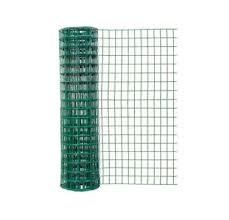Dec . 01, 2024 18:16 Back to list
Different Styles of Roofing Nails and Their Applications for Effective Installation
Types of Roofing Nails A Comprehensive Guide
When it comes to roofing, the importance of using the right materials cannot be overstated. One of the crucial components often overlooked is roofing nails. These seemingly simple fasteners play a vital role in ensuring the durability and stability of a roof. Understanding the different types of roofing nails, their uses, and their characteristics can make a significant difference in the quality and longevity of your roofing project.
1. Common Roofing Nails
Common roofing nails are typically made of steel and are characterized by their large, flat heads and sharp point. They are designed to penetrate roofing materials, such as shingles and underlayment, easily. The flat head provides a broad surface area that helps to secure the shingles in place, preventing water infiltration and other weather-related issues. Common roofing nails are usually 1 to 2 inches long, making them suitable for a wide range of roofing applications.
2. Galvanized Roofing Nails
Galvanized roofing nails are treated with a layer of zinc to prevent rust and corrosion. This makes them ideal for use in areas with high moisture levels, where other types of nails may fail over time. The galvanized coating adds durability and extends the lifespan of the nails. These nails are available in various lengths and gauge sizes, allowing for flexibility in different roofing installations. For asphalt shingles, galvanized roofing nails are commonly recommended to ensure long-lasting performance.
3. Stainless Steel Roofing Nails
For homeowners who prioritize longevity and corrosion resistance, stainless steel roofing nails are the best choice. These nails are particularly beneficial in coastal areas where saltwater exposure can lead to rust and early degradation of less durable materials. Stainless steel roofing nails are available in different grades, with Type 304 and Type 316 being the most common. Type 316 is particularly resistant to corrosion and is ideal for harsh conditions, while Type 304 is suitable for general use.
Plastic cap roofing nails come with a large plastic washer (cap) that creates a larger surface area for securing shingles. This helps to prevent water from penetrating through around the nail heads. These nails are often used in roofing underlayment installations and are particularly effective in windy areas where traditional nails may pull through. Plastic cap nails are available in both galvanized and stainless steel versions, offering versatility for various roofing materials.
types of roofing nails

5. Roofing Staplers
While not nails in the traditional sense, roofing staplers are another essential tool in the roofing industry. Roofing staples are generally used with synthetic underlayment and are designed to secure the underlayment down firmly. They provide a fast and efficient way to cover large areas, particularly for roofing systems that require a high volume of fasteners. However, it's essential to ensure that the staples used meet the local building codes and are appropriate for the specific roofing materials being installed.
6. Nail Gun Roofing Nails
For professional contractors and DIY enthusiasts looking for efficiency, nail gun roofing nails are a practical choice. These nails are specifically designed for use with pneumatic nail guns, allowing for quick and easy installation. Nail gun nails are available in collated strips, making them compatible with various nail gun models. They often come in galvanized or coated versions to enhance durability and rust resistance.
Key Considerations
When choosing the right roofing nails for your project, consider the following factors
- Material Choose between galvanized, stainless steel, or common steel based on the environment and roofing materials. - Length and Gauge Ensure the nails are long enough to penetrate the roofing materials securely and gauge size is appropriate for the weight of the materials. - Local Building Codes Always check local regulations to ensure compliance with code requirements, which may dictate specific types of fasteners.
Conclusion
Roofing nails are an integral part of any roofing project, playing a key role in the structure's overall performance and longevity. By understanding the different types of roofing nails and their appropriate applications, homeowners and contractors can make informed decisions, leading to more durable and effective roofing systems. Whether you’re repairing an existing roof or embarking on a new roofing project, investing in the right roofing nails will ultimately protect your home from the elements for years to come.
-
The Role of Field Wire Fence in Grassland Conservation
NewsJul.15,2025
-
Stainless Steel Razor Wire Durability in Coastal Environments
NewsJul.15,2025
-
Enhancing Home Security with Mesh Fences
NewsJul.15,2025
-
Diamond Mesh Wire for Small Animal Enclosures
NewsJul.15,2025
-
Common Wire Nail Tensile Strength Testing for Woodworking
NewsJul.15,2025
-
Barbed Wire Corrosion Resistance Galvanization Techniques
NewsJul.15,2025









